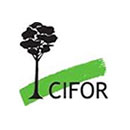It may surprise you to find out that Costa Rica did not invent payment for environmental services. One hears constantly about Costa Rica’s innovative mechanisms for financing biodiversity conservation and carbon sequestration. But few people realize how much Colombia has advanced in creating a permanent system to fund watershed management. Despite Colombia’s internal military conflict and financial troubles, in 1998 public agencies spent US $362 million on environmental projects; three times more than in 1993. For those interested in finding out about this, ’Funding Colombia’s Green Plan: Challenges and Opportunities’ by Manuel Rodriguez and Eugenia Ponce de Leon provides a good introduction.
A new Constitution and Environment Law, passed in 1991 and 1993, respectively, put this process in motion. They established a fund to channel part of the royalties from mining and petroleum extraction to provincial and municipal governments. Environmental projects receive about a third of these funds. Large hydroelectric plants must transfer 3% of their revenues to Colombia’s 34 autonomous regional corporations (CARs) and an additional 3% to municipal governments to carry out watershed and sanitation projects. Thermoelectric plants have to pay 2.5% of their revenues to the CARs and 1.5% to the municipalities. Part of this money goes directly to the regions where the plants are located and part goes to a general fund that assists poor regions that have no plants. Payments by the energy plants and property taxes provide 80% of the income received by the CARs, which implement a large share of the country’s natural resource projects. The law also says that any entity that invests in water projects most devote 1% of the funds they invest to watershed protection and requires provincial and municipal governments to spend 1% of their budget to purchase lands that protect the sources of water used by municipal aqueducts. Besides providing a way for the downstream beneficiaries of the watershed services, these funding mechanisms ensure a long-term stable source of funding for watershed management activities.
Over the next few years, a large portion of all these funds will go to supporting Colombia’s so-called ’Green Plan’. This ambitious plan, initiated in 1999, will finance the reforestation and natural regeneration of 160,000 hectares, as well as training and research. It is noteworthy that the plan includes natural regeneration as well as reforestation. This plan builds on the experience of watershed management projects financed by the multilateral banks in the mid-1990s.
We want you to share Forests News content, which is licensed under Creative Commons Attribution-NonCommercial-ShareAlike 4.0 International (CC BY-NC-SA 4.0). This means you are free to redistribute our material for non-commercial purposes. All we ask is that you give Forests News appropriate credit and link to the original Forests News content, indicate if changes were made, and distribute your contributions under the same Creative Commons license. You must notify Forests News if you repost, reprint or reuse our materials by contacting forestsnews@cifor-icraf.org.
Further reading
To send comments to the authors or obtain a free electronic version of the paper in English, you can write Manuel Rodriguez at: mailto:mcrod@cable.net.co To request a Spanish language version of the paper, please write Eugenia Ponce de Leon at: mailto:eponce@multi.net.co




